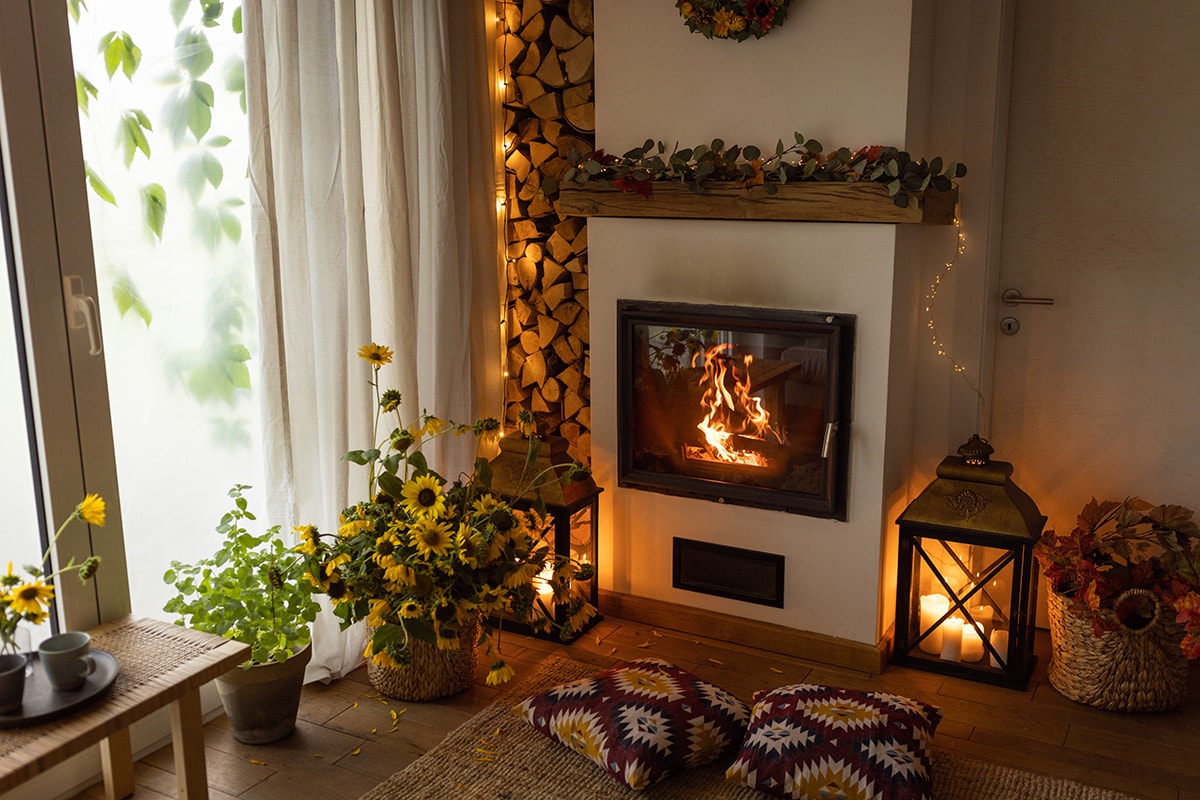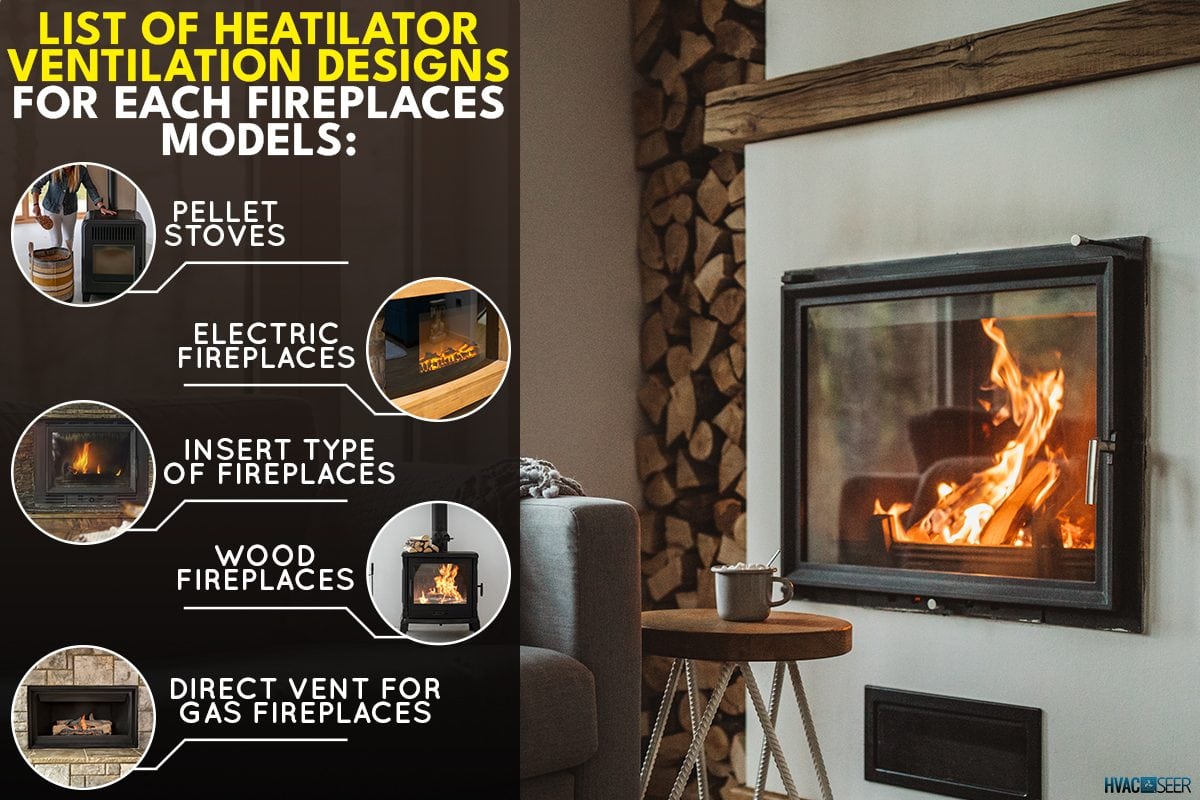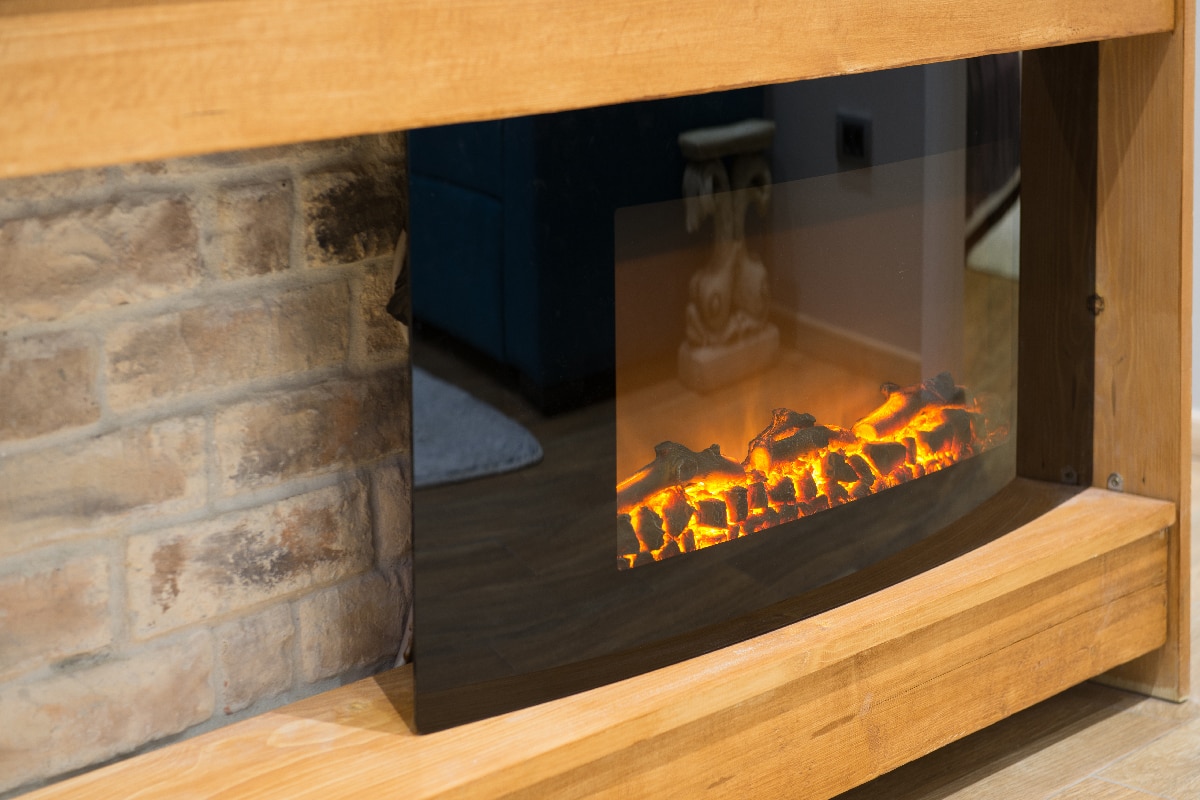Your Heatilator fireplace vents are essential in keeping and regulating your house's ideal warm air circulation. Though sometimes you might wonder whether you can cover its vents or perhaps it would cause a risk. Well, you're a moment away from knowing the answer we've found below!
Your Heatilator vents are vital in regulating airflow in your home's various spaces. Air circulation travels through the vents to reach each of your rooms.
There's no way to attain proper air movement if you cover the vents. Furthermore, obstructing Heatilator vents will eventually result in fires and certainly makes your warranty worthless as well.
That was easy, was it? Well, keep on reading because there is more crucial information waiting for you to uncover below. We will explain to you what venting system a Heatilator fireplace uses. We will also provide some insights into why covering your vents raises fire risk. So without further ado, let's jump into the discussion!
What Is A Heatilator Fireplace?
Heatilator fireplaces or "old-style" fireplaces have a multipurpose function of a heater with a ventilator, making them, by definition, air-circulating fireplaces. Heatilator fireplaces have a unique venting system to warm your house's living spaces. It pulls in cool air and distributes it as heated air.

Its ventilation system ensures that airflow is free from ash, foul smells, or smoke since air never goes into the firebox. Moreover, it moves the air directly around the firebox allowing it to heat rather than moving the air inside.
What Type Of Ventilation System Does Heatilator Use?
Heatilator offers their gas fireplaces with direct vents and a B-vents system. These vent systems are the company's most salable systems today. Some of their clients preferred to have this system because it features safety and convenience.
A "direct vent" focuses on its air-tight sealed combustion system, ensuring you have the best interior air quality circulation. It contains two chambers that cooperate to serve two functions:
- One of its notable functions is to take oxygen into the combustion from the outside.
- The second one is to exhaust pollutants and waste from the fire outside.
Although, you can connect the vent via your top or side vents. However, direct vents often end directly through a wall and may extend horizontally.
Furthermore, with this vent system, you can guarantee that your house's air quality is purely cleansed from any air contaminants since the system ensures that 100% of its combustion waste safely exits outside your home.
Direct Vents Vs. B-Vents: What's Their Difference?
The B-vents systems are vented vertically and utilize the fresh air within the house to supply oxygen to the fire. All of the fresh air that a direct vent draws comes from the outside and has a sealed glass front.
A wall on the outside can be used to vent direct vents either vertically or horizontally. Unlike B-vent fireplaces, direct vents have a completely sealed system.
Do All Heatilator Fireplaces Need Ventilation?
Any Heatilator fireplace needs venting as long as it is not an electric model. Heatilator fireplaces have a wide range of ventilation designs. These designs can work in roof and wall applications in either horizontal or vertical settings. Also, the type of materials you're using to burn the fire will determine the path of the airflow of your fireplace.
Here's the list of some Heatilator ventilation designs for each fireplaces models:

Pellet Stoves
This fireplace mostly houses its ventilation horizontally and runs straight into your wall through the outside.
Electric Fireplaces

This type of fireplace doesn't require a ventilation system. This means you don't need to bother to provide the budget to install an entire chimney. All you need to do is save it for maintenance purposes which don't happen very often
Insert Type Of Fireplaces
Most inserts types of fireplaces will be vented vertically into the roof through your existing chimney.
Wood Fireplaces And Stoves

The ventilation of these types of fireplaces needs to end vertically and be directed outside.
Direct Vent For Gas Fireplaces
You can vent this fireplace vertically through your roof. However, most vents in these settings are horizontally run directly through your wall.
It's best to know what ideal vents and construction requirements for each type of Heatilator fireplaces you might need.
Why Covering Fireplaces Vents Increase Fire Risk?

Proper ventilation is essential to avoid fire breaking in your chimney and spreading it out to your other property. The chances of fire escalation are relatively high if you're using a wood or stove type of fireplace in your Heatilator.
Every time you start burning your wood, tiny unburned wood particles are also pushed into the air. This will eventually lead to the fast development of creosote or soot and over time could pose a fire risk.
Bear in mind that wood is the primary cause of creosote build-up in your chimney's liner, especially if you're using green wood. Also, these elements are highly flammable, thus they can easily ignite over excessive heat exposure.
If you cover your vents, these combustible elements may backdraft your chimney and could start a fire. Providing your fireplaces with proper ventilation and cleaning your chimney yearly will help avoid fire escalation.
How Can I Tell If My Fireplace Is Venting Properly?
Besides a fireplace being a perfect source to warm your house during colder months. This can naturally boost your home's overall ambient looks. However, just like other appliances in your home, this could also cause issues.
The most evident indication that something is wrong with the fireplace is when smoke is flowing back inside your house. This is the result of backdraft issues in the fireplace.
For this instance, it's reasonable enough to believe that your fireplace doesn't have adequate ventilation. You can avoid backdraft problems if you are aware of how your fireplace works. Additionally, being proactive at spotting the warning signs of poor venting and addressing them immediately can certainly help as well.
How To Find And Fix Chimney Backdraft Issue?
Homeowners must act accordingly and quickly when they do encounter a backdraft issue in their fireplaces. This will not only endanger your family's health but could also destroy your property.
Smoke that comes from your wood fireplace contains toxic substances that pose a threat to you or your family's health. According to EPA, every year approximately 3,000 Americans die in residential fires, most of them from smoke inhalation. Knowing how you handle and fix chimney backdraft issues will ensure your overall safety always.
The following are the preventative steps you must follow to avoid backdraft issues in your chimney:
Allow Air Circulation
Given that hot air naturally rises, several areas of your home may face varying air pressure. This creates low air pressure in lower colder areas and high pressure in areas where warm air gathers.
This is the exact reason why backdraft or air/smoke is blowing back inside your home, instead of venting it outside. You can prevent this by allowing proper air circulation within that area or simply opening your windows.
Proper Chimney Installation And Maintenance
A fire could easily ignite if your chimney restricts proper airflow in your chimney. As we've talked early on, a blocked chimney is the result of condense creosote build-up.
You must clear any obstruction within your chimney annually. In addition, if your chimney is too short, a backdraft can occur. A good updraft needs a taller chimney, which is needed for a larger flue size.
Therefore, you must elevate your chimney at least three feet higher than the flat roof, and two feet higher than your roof ridge, to achieve sufficient airflow exhaustion.
Install A Chimney Cap
Downdraft occurrences often arise in windy locations and it's no surprise for the smoke to overflow back inside your space. Installing a chimney cap can help prevent wind from blowing back the smoke inside your house.
Get this reliable chimney cap on Amazon.
To Wrap Things Up
In this post, we've learned tons, especially that covering your Heatilator vents isn't advised. We also shared why proper ventilation is significant in regulating the right airflow and safeguarding your home. We hope that you use this learning to your benefit to avoid facing serious problems in the future.
Made it this far? Read our other information article below!
My Gas Fireplace Makes The Room Too Hot — Can It Be Adjusted?

